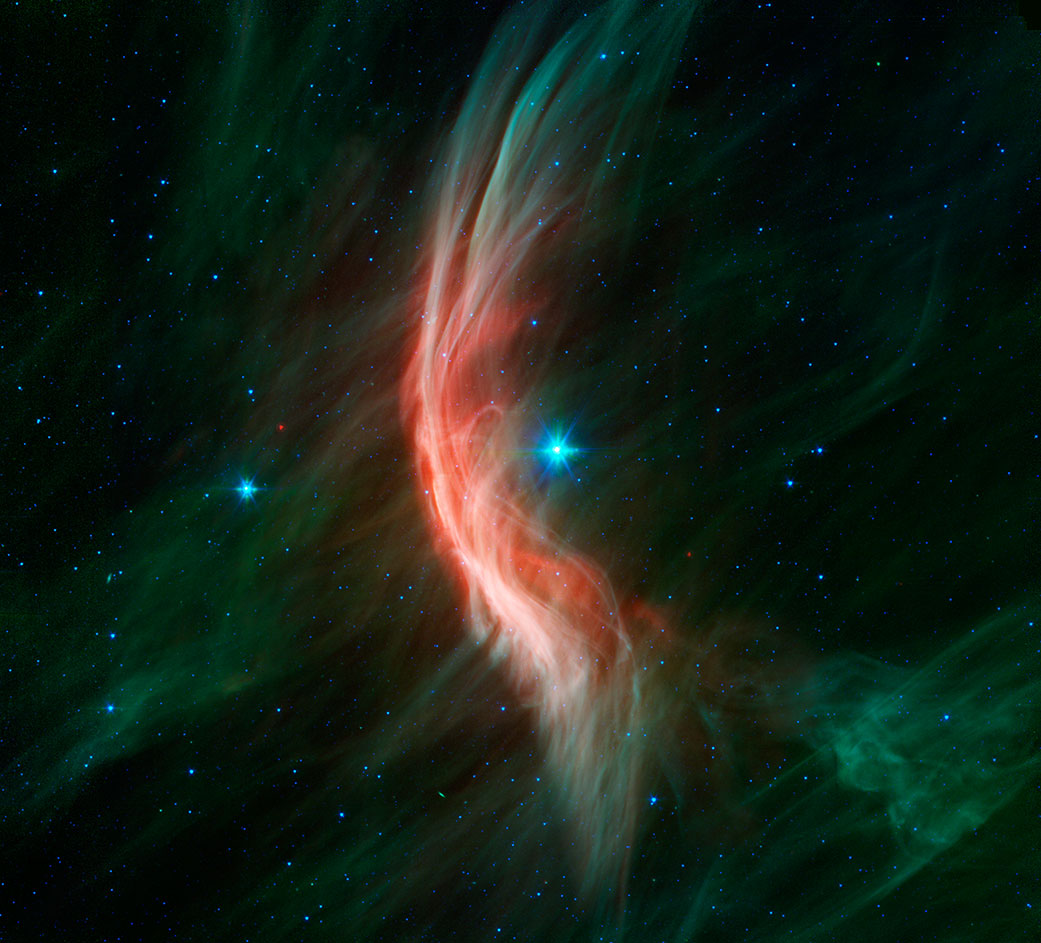Sixteen years ago, NASA launched its Spitzer Space Telescope into orbit around the Sun. Since the observatory launched on Aug. 25, 2003, it has been lifting the veil on the wonders of the cosmos, from our own solar system to faraway galaxies, using infrared light. Spitzer’s primary mission lasted five-and-a-half years and ended when it ran out of the liquid helium coolant necessary to operate two of its three instruments. But its passive-cooling design has allowed part of its third instrument to continue operating for more than 10 additional years. The mission is scheduled to end on Jan. 30, 2020.
This Spitzer image shows the giant star Zeta Ophiuchi and the bow shock, or shock wave, in front of it. Visible only in infrared light, the bow shock is created by winds that flow from the star, making ripples in the surrounding dust. Located roughly 370 light-years from Earth, Zeta Ophiuchi dwarfs our Sun: It is about six times hotter, eight times wider, 20 times more massive and about 80,000 times as bright. Even at its great distance, it would be one of the brightest stars in the sky were it not largely obscured by dust clouds.
Read more about this image here: https://www.jpl.nasa.gov/news/news.php?feature=3630
Image Credit: NASA/JPL-Caltech
十六年前,NASA将斯皮策太空望远镜发射到绕太阳运行的轨道上。自2003年8月25日天文台发射以来,它一直在利用红外线揭开宇宙奇观的面纱,从我们自己的太阳系到遥远的星系。斯皮策太空望远镜的主要任务持续了5年半,当它用完运行三种仪器中的两种所必需的液氦冷却剂后就结束了。但是它的被动冷却设计使得它的第三个仪器的部分能够继续工作超过10年。该任务计划于2020年1月30日结束。
这张斯皮策望远镜拍摄的图像显示了巨星蛇夫座泽塔和它前面的弓形激波。弓形激波只能在红外线下看到,它是由恒星吹来的风造成的,在周围的尘埃中产生涟漪。距离地球约370光年的蛇夫座ζ(Zeta Ophiuchi)令我们的太阳相形见绌:它的温度是地球的6倍,宽度是地球的8倍,质量是地球的20倍,亮度是地球的8万倍。即使在很远的地方,如果不是被尘埃云遮住,它也会是天空中最亮的星星之一。
更多关于此图像的信息请点击这里:https://www.jpl.nasa.gov/news/news.php?feature=3630
图片来源:NASA/JPL-Caltech








wow